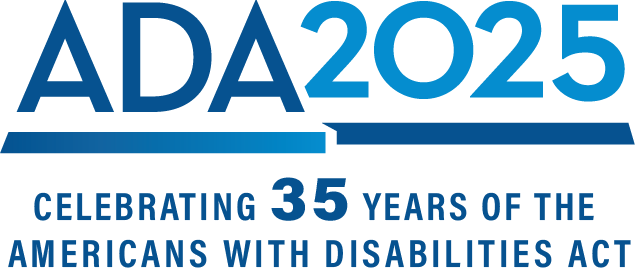35 Years of Everyday Impact
When the ADA became law in 1990, it was a landmark moment for disability rights. It opened doors — literally and figuratively — for people with disabilities. But the ADA didn’t just help some people; it helped all of us. More than 35 years later, the ADA continues to shape our environment. From how we move through public spaces to how we connect and communicate, the ADA makes everyday life safer and more accessible, whether we notice it or not.
5 ways the ADA helps us all
- Curb cuts and ramps improve sidewalks for strollers, luggage, and carts.
- Automatic doors open smoothly when your hands are full.
- Video captions help you watch videos without sound, like in noisy places.
- Crosswalk signals with audio cues help you cross more confidently.
- Accessible workplaces increase efficiency and productivity.
Explore everyday impacts
Features first created to remove barriers for people with disabilities also make life easier for everyone—from curb cuts to smartphone screens. Click each section below to learn just a few ways the ADA shows up in your daily life.
- Getting around
-
Did you know the ADA changed how we move through streets, spaces, and transportation systems?-
Curb cuts and ramps were first required to support wheelchair users, but today they also make life easier for people using strollers, scooters, walkers, and delivery carts.
-
The ADA helped bring low floors and lifts to public buses, making it easier for everyone to hop on, from travelers with luggage to parents with kids.
-
Automatic doors, wide aisles, and bumpy floor indicators were created because of the ADA, and now we all benefit, whether we’re carrying coffee or staying alert near curbs and train platforms.
-
Recreation trails with firm, stable surfaces were developed because of the ADA, but they make the outdoors safer and more enjoyable for all.
-
- Getting information
-
Did you know the ADA changed how we take in and understand what’s around us?- Audio crosswalk signals started out to help people who are blind or have low vision, but now they make crossing streets safer and easier for everyone.
- Bold signage, colorful maps, and clear symbols were built for accessible navigation, and now they guide us all smoothly through airports, hospitals, and stadiums.
- Captions and transcripts came from the need to make videos accessible for the deaf community, but today, many of us use them when watching TV or getting information in noisy spots.
- Text alerts, emails, and flashing visuals were developed to meet emergency communication rules, and now they quickly get urgent info to everyone.
- Getting things done
-
Did you know the ADA changed how we work, learn, and manage daily life?- Reachable light switches, easy-to-use thermostats, and open floor plans were designed with ADA standards and now simplify life for anyone juggling groceries, strollers, or mobility devices.
- Lever-style door handles were created to break down barriers for people with limited grip strength, and today, they make opening doors a breeze for anyone, especially when their hands are full.
- Ergonomic desks, chairs, and keyboards started as solutions for employees with physical disabilities and now help reduce strain and boost comfort for workers everywhere.
Learn more
Check out our Real People, Real Stories page to hear people with disabilities describe how the ADA has impacted their lives.

